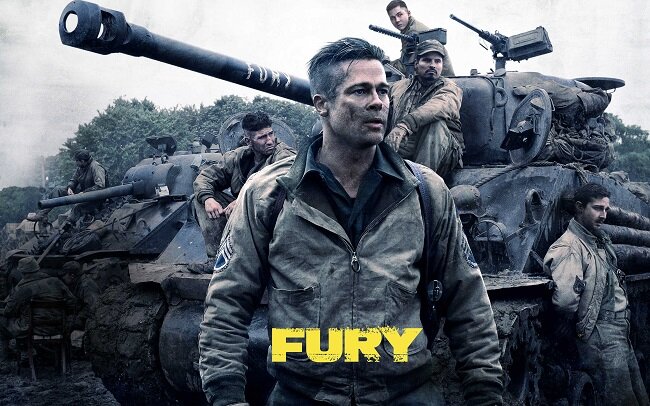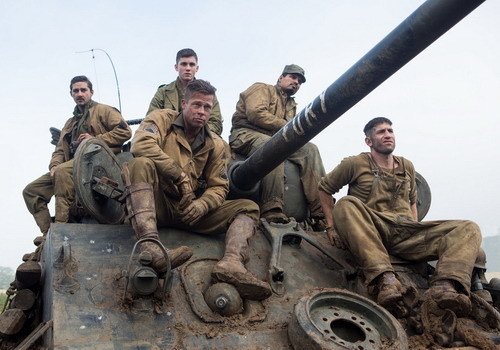Fury (2014)

Understanding “Fury” (2014): A Deep Dive into Its Content and Themes
“Fury” (2014), directed by David Ayer, is a gripping World War II film that provides a raw and unfiltered look into the lives of American soldiers during the final days of the war. The movie stars Brad Pitt, Shia LaBeouf, Logan Lerman, Michael Peña, and Jon Bernthal, each delivering powerful performances that bring the gritty realism of wartime experiences to the forefront.
Plot Summary
Set in April 1945, “Fury” follows a U.S. Army tank crew as they navigate the treacherous terrain of Nazi-occupied Germany. Led by the battle-hardened Sergeant Don “Wardaddy” Collier (Brad Pitt), the crew operates their Sherman tank named “Fury” with a sense of duty and camaraderie forged through countless battles. As they push deeper into enemy territory, they face increasingly fierce opposition and the harsh realities of war. The arrival of a new and inexperienced soldier, Norman Ellison (Logan Lerman), challenges the dynamics of the crew and exposes the emotional and psychological toll of combat.

Themes and Meaning
- Brotherhood and Loyalty: At its core, “Fury” is a film about the deep bonds formed between soldiers in the crucible of war. The camaraderie among the crew of “Fury” is depicted as a critical component of their survival. Their loyalty to each other and their shared experiences in battle underscore the profound connections that emerge in times of extreme adversity.
- The Brutality of War: The film does not shy away from portraying the brutal realities of combat. The relentless violence, the moral ambiguities, and the psychological scars left on the soldiers are depicted with unflinching honesty. “Fury” aims to present a realistic portrayal of the horrors faced by soldiers, highlighting both the physical and emotional costs of war.
- Leadership and Sacrifice: Sergeant Collier’s character embodies the complexities of military leadership. His stern demeanor and unwavering commitment to his men reveal the burdens of leadership in wartime. Collier’s sacrifices and his efforts to instill a sense of duty and resilience in his crew reflect the personal costs of commanding a unit under such dire circumstances.
- Innocence and Experience: Norman Ellison’s journey from a naïve young soldier to a battle-hardened warrior illustrates the loss of innocence that accompanies war. His transformation is a poignant reminder of how combat can reshape individuals, stripping away their naivety and exposing them to the harsh realities of human conflict.
- Survival and Redemption: Throughout the film, themes of survival and redemption play crucial roles. The crew’s struggle to stay alive amidst overwhelming odds and their quest for redemption for their past actions add depth to their characters. This theme is particularly embodied in the final, climactic battle, where the crew’s determination to fight against all odds culminates in a dramatic and intense confrontation.

Conclusion
“Fury” (2014) stands out as a powerful and intense war film that captures the essence of brotherhood, the brutality of conflict, and the personal sacrifices of soldiers. Through its gripping narrative and complex characters, the film provides a thought-provoking exploration of the impact of war on the human spirit. It serves as both a tribute to the bravery of those who fought and a stark reminder of the enduring cost of warfare.











